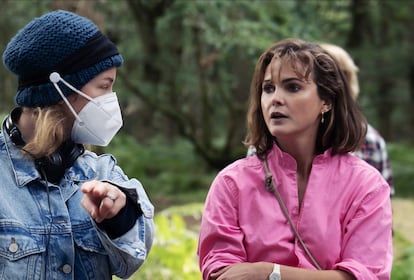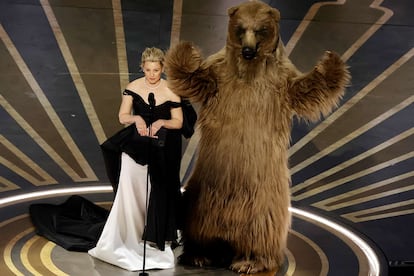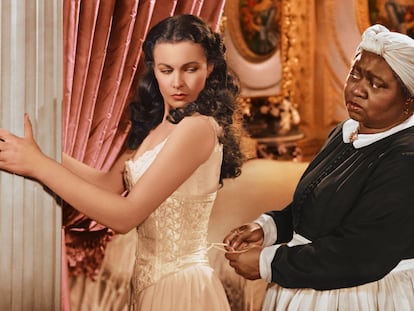The strange tale of ‘Cocaine Bear’
A true story of the 200-pound beast found dead of a cocaine overdose in 1985 becomes a Hollywood blockbuster


The autopsy produced one indisputable conclusion: the 200-pound male black bear found dead in December 1985 in Chattahoochee National Park (in the Appalachian Mountains of northern Georgia) had died of a cocaine overdose. Near the body of the most common bear species in the United States was a sports bag with more than 66 pounds of cocaine with a street value of over $15 million at the time. The bag had been thrown out of an airplane by a drug trafficker. Strewn around the bear’s body were 40 open and empty packages of the drug. The autopsy report indicated a cerebral hemorrhage, a perforated stomach and all kinds of damage to internal organs. Over the years, the legend grew along with the size of the animal, the drug cache and its value. Now the story has become a Hollywood movie — Cocaine Bear.

How did the bear get the cocaine? The culprit was Andrew Thornton II, the son of a wealthy Kentucky horse breeder, who had gone from narcotics officer to convicted drug dealer. He was flying back from Colombia in September 1985 in his Cessna plane when the overloaded aircraft began to falter. Thornton threw the bags of cocaine out before parachuting to safety. When he exited the aircraft, his head hit the plane’s tail, knocking him unconscious. Thornton ended up sprawled on the driveway of a Knoxville, Tennessee home. He was wearing night vision goggles, a bulletproof vest and Gucci loafers. The key to the plane was in his pocket, along with $4,500, several knives and two handguns. When police found the wreckage of the aircraft that crashed hours later in North Carolina, they traced its flight path and found nine large sports bags filled with cocaine. Three months later, the cocaine bear and the tenth bag turned up.
There are a couple more twists to the story. The bear was stuffed and christened “Pablo Eskobear,” a play on the name of the infamous Colombian drug trafficker. After passing through the hands of several owners, the stuffed bear is now a tourist attraction at the “Kentucky for Kentucky” souvenir shop in Lexington — anything to attract a few tourists.

The next surprising turn of events was triggered by Phil Lord and Chris Miller, the directors of Cloudy with a Chance of Meatballs and The Lego Movie, and the producers of Spider-Man: Into the Spider-Verse. These two creative guys were fired from Solo: A Star Wars Story when they clashed with Lucasfilm over the comedic tone they wanted for the script. The script for Cocaine Bear was written by Jimmy Warden, a former production assistant on Lord and Miller’s 21 Jump Street. Warden pitched the script to his former bosses, who loved it so much that they included it in their package deal with Universal Studios.
The movie went into production in late 2019 with Radio Silence Productions (filmmakers Matt Bettinelli-Olpin and Tyler Gillett and producer Chad Villella) at the helm. But the trio decided instead to focus on the new Scream movie. Enter actress and director Elizabeth Banks, whose impressive resume includes roles in The Hunger Games, Zack and Miri Make a Porno, W. and Meet Bill, and directorial turns in the Pitch Perfect trilogy and Charlie’s Angels (a box office bomb). Banks had collaborated previously with Lord and Miller, who gave her complete freedom on Cocaine Bear.
Banks kept the name Andrew Thornton II and made up the rest of the story, turning it into a black comedy and gore movie. In real life, Pablo Eskobear didn’t kill anyone. But in the film, the drug-crazed black bear kills anyone and anything in its way. Banks told Variety magazine that she felt “deep sympathy for the bear… and felt like this movie could be that bear’s revenge story.” An innocent bear got dragged into a drug run gone wrong, so its rampage was justifiable. Movie watchers reacted enthusiastically, and the film has so far grossed $80 million worldwide. The bear even made an appearance at the 2023 Academy Awards.

Cocaine Bear was shot in Ireland in August-October 2021, and a large part of its $35 million budget was spent on computer-generated imagery (CGI) for the bear. Many familiar faces appear in the movie, but only characters with children survive. Keri Russell’s husband and co-star in The Americans, Matthew Rhys, makes a cameo as Thornton. Other main characters include O’Shea Jackson Jr. (Ice Cube’s son), Alden Ehrenreich (Han Solo in the film from which Lord and Miller were fired), and veteran actors Margo Martindale and Isiah Withlock Jr. The movie is dedicated to Ray Liotta, who appears in his first posthumous film. The opening sequence features Kristofer Hivju (Game of Thrones) playing a guy named Olaf hiking in the Appalachian Mountains with his fiancée Elsa (a double nod to Frozen). They are the first unfortunates to cross paths with the ferocious animal.
Cocaine Bear is riding a new wave of box-office love for B movies, low-budget commercial films like Plane (with the fireproof Gerard Butler), The Unbearable Weight of Massive Talent (Nicolas Cage plays Nicolas Cage), or even John Wick 4 (a saga with zero pretensions). These recent releases are heirs to popular classics like Snakes on a Plane (the titles never lie). Then there are Z movies that feed on B movie leftovers. These have even smaller budgets and have already produced a few junkie animals. The Asylum production company dominates this market with horror shows like Attack of the Meth Gator (alligators on meth) and Cocaine Shark (a mega-shark with a coke addiction).
Sign up for our weekly newsletter to get more English-language news coverage from EL PAÍS USA Edition
Tu suscripción se está usando en otro dispositivo
¿Quieres añadir otro usuario a tu suscripción?
Si continúas leyendo en este dispositivo, no se podrá leer en el otro.
FlechaTu suscripción se está usando en otro dispositivo y solo puedes acceder a EL PAÍS desde un dispositivo a la vez.
Si quieres compartir tu cuenta, cambia tu suscripción a la modalidad Premium, así podrás añadir otro usuario. Cada uno accederá con su propia cuenta de email, lo que os permitirá personalizar vuestra experiencia en EL PAÍS.
¿Tienes una suscripción de empresa? Accede aquí para contratar más cuentas.
En el caso de no saber quién está usando tu cuenta, te recomendamos cambiar tu contraseña aquí.
Si decides continuar compartiendo tu cuenta, este mensaje se mostrará en tu dispositivo y en el de la otra persona que está usando tu cuenta de forma indefinida, afectando a tu experiencia de lectura. Puedes consultar aquí los términos y condiciones de la suscripción digital.
More information
Archived In
Últimas noticias
There is as much life left to discover on planet Earth as that which is already known
Dozens presumed dead, around 100 injured in fire at Swiss Alps bar during New Year’s celebration
Is porn for women different from conventional porn? We spoke to those who make it
Cartagena de Indias is sinking: What can the city do to mitigate it?
Most viewed
- Reinhard Genzel, Nobel laureate in physics: ‘One-minute videos will never give you the truth’
- Sinaloa Cartel war is taking its toll on Los Chapitos
- David King, chemist: ‘There are scientists studying how to cool the planet; nobody should stop these experiments from happening’
- Oona Chaplin: ‘I told James Cameron that I was living in a treehouse and starting a permaculture project with a friend’
- The Interoceanic Train, the Mexican alternative to the Panama Canal










































